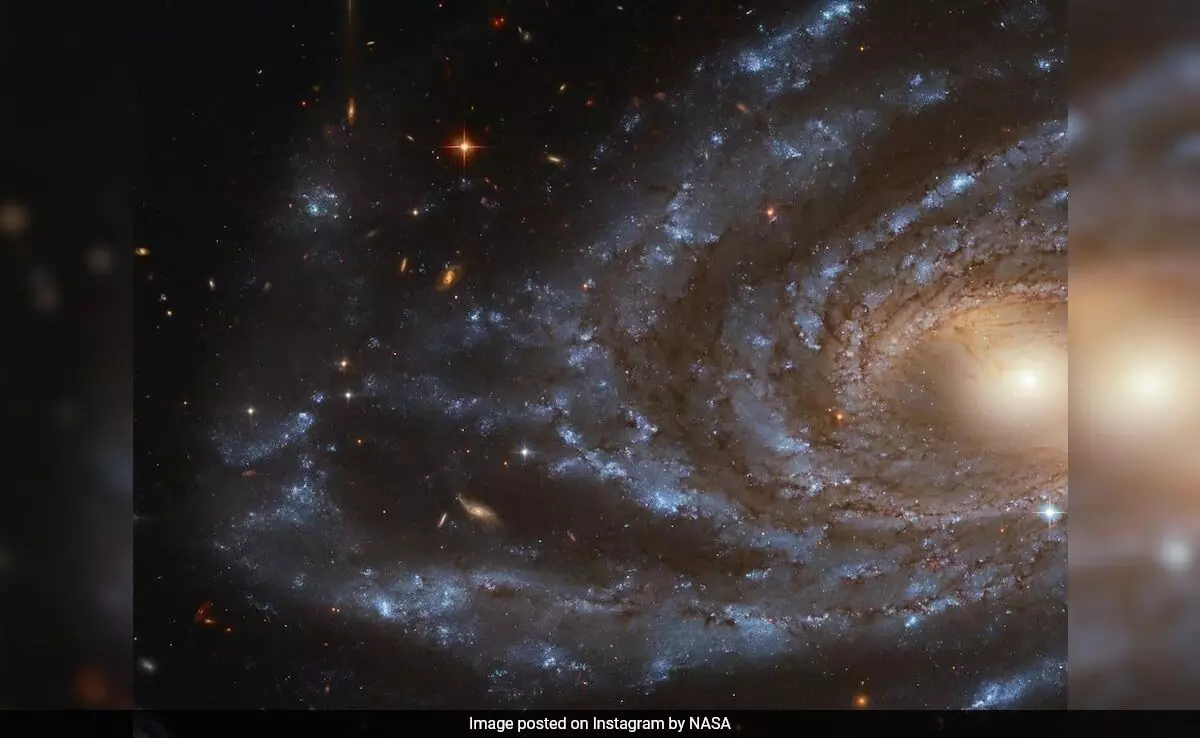
Arms of spiral galaxy 100 mn light-years away captured by Hubble
text_fieldsThe breathtaking photos of our universe that the National Aeronautics and Space Administration (NASA) constantly obtains captivate space enthusiasts. The US Space Agency's Instagram account is a real treasure trove for anyone who enjoys watching informative videos and eye-catching pictures of Earth and space. NASA now posted a photo of the constellation Camelopardalis in a recent post. The picture, captured by NASA's Hubble Space Telescope, depicts the extended arms of a massive spiral galaxy situated around 100 million light-years from Earth, NDTV reported.
NASA explained, "Around 200,000 light-years across, this galaxy is roughly twice the size of our own Milky Way galaxy, with a similar shape and composition. Young stars appear in blue near the outskirts of the galaxy, while older stars appear toward the centre in red."
This beautiful spiral galaxy, also called NGC 2441, was first noticed in 1882 by German astronomer Wilhelm Tempel, who had an excellent eye for comets. According to NASA's blog, Tempel witnessed and recorded about 21 comets in all, with a number of them named after him.
The image displays the blue-tinted spiral arms of the blue galaxy extending towards the right side of the image, which glows yellow-white, from the galaxy's centre. Stars and galaxies adorn the foreground.
Within 14 hours of NASA sharing the photos, there have been several replies and over 460,396 likes. Some commenters praised the photo as beautiful, while others labelled it as unbelievable.
A user wrote, "Bilions stars and only one civilization? No chance."
Another user commented, "It looks like a water cyclone."
"Good job NASA," the third user wrote.
























